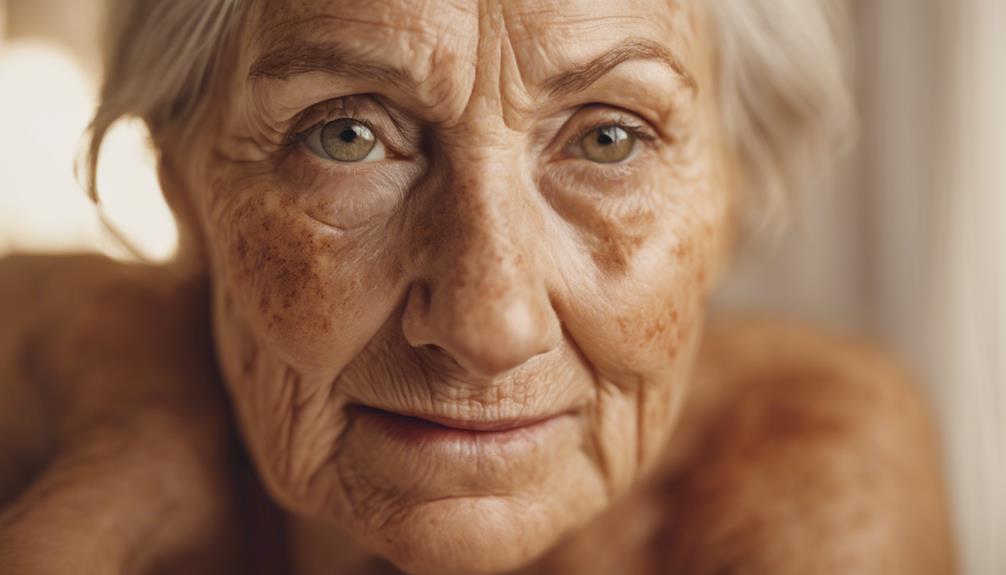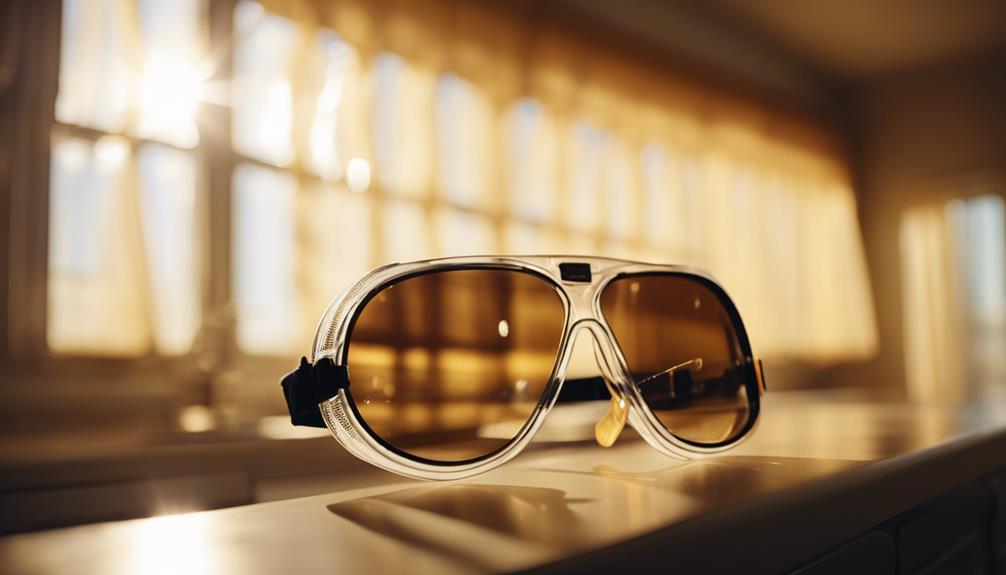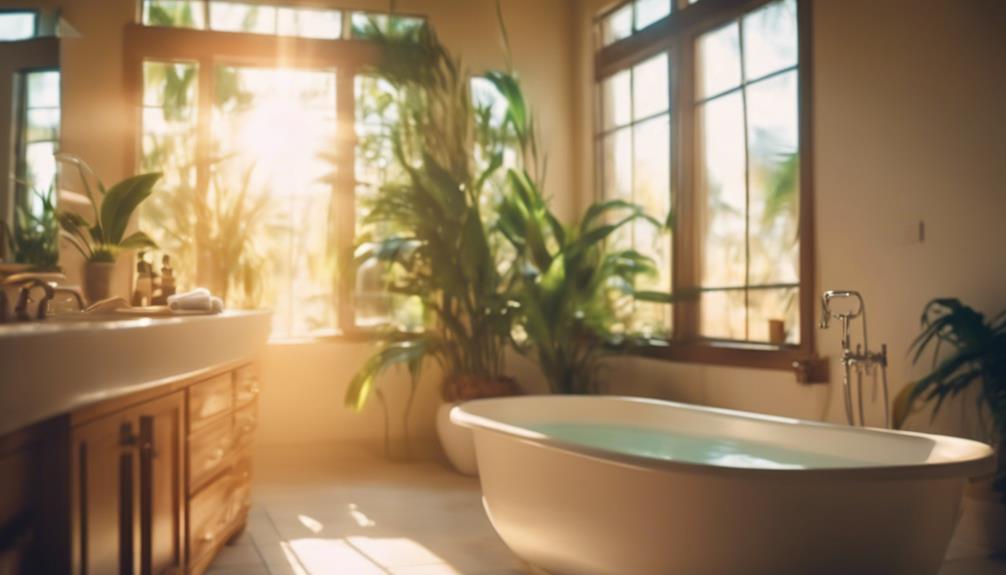Tanning beds expose you to harmful UV rays that significantly increase your risk of skin cancer, including melanoma. They also speed up skin aging, resulting in premature wrinkles and age spots. In addition to skin damage, tanning can also be harmful to your eyes, increasing the risk of cataracts and other vision issues. If you are still considering tanning, it is important to use protective goggles and limit your sessions. There are safer alternatives like self-tanners that can give you a bronzed look without the negative effects. To gain a better understanding of the risks and safer alternatives, you may find the following information interesting.
Key Takeaways
- Tanning beds emit harmful UV rays, increasing the risk of skin cancers like melanoma and squamous cell carcinoma.
- Regular use of tanning beds accelerates skin aging, leading to premature wrinkles and age spots.
- Eye damage, including cataracts and macular degeneration, can occur due to UV exposure in tanning beds.
- Protective measures, like wearing goggles and using sunscreen, are essential but do not eliminate all risks.
Risks of UV Radiation
Tanning beds expose you to harmful UV radiation, greatly increasing your risk of developing skin cancers like melanoma and squamous cell carcinoma. These devices emit both UV-A and UV-B rays, with UV-B rays being especially dangerous.
If you start tanning at a young age, your skin cancer risk skyrockets. The intense UV exposure from tanning beds considerably raises your chances of developing basal cell carcinoma, squamous cell carcinoma, and melanoma later in life.
It's essential to understand the connection between UV rays and skin cancer so you can make informed decisions about your tanning habits. Prioritizing prevention strategies and limiting your exposure can help reduce the incidence of skin cancer and protect your long-term health.
Eye Damage From Tanning
Exposing your eyes to UV radiation from tanning beds can lead to serious damage, increasing the risk of cataracts and macular degeneration. Without proper eye protection, you're putting your vision at significant risk.
The cornea can suffer from UV exposure, resulting in pain and long-term vision problems. It's essential to wear protective goggles specifically designed for tanning. Many people overlook the necessity of eye protection during tanning sessions, but awareness is key to preventing injuries.
Always guarantee your eyes are shielded, as even short sessions can have harmful effects. Remember, your vision is just as important as your skin, so take the necessary precautions to protect your eyes while tanning.
Don't compromise your sight for a temporary glow.
Skin Aging Effects

Using tanning beds accelerates skin aging, leading to premature wrinkles and a leathery texture.
When you expose your skin to UV rays, collagen breaks down, which results in fine lines and loss of elasticity. You might notice age spots appearing earlier than expected, as UV damage speeds up skin discoloration. Frequent tanning can even make stretch marks more pronounced, adding to an aged appearance.
The long-term effects of indoor tanning aren't just cosmetic; they can considerably alter your skin's overall health. Instead of achieving that sun-kissed glow, you risk looking older than you are.
It's crucial to reconsider your tanning habits if you want to maintain youthful, healthy skin for years to come.
Safe Tanning Practices
Prioritizing safe tanning practices is essential to protect your skin and reduce the risk of serious health issues.
When you decide to tan, keep these guidelines in mind:
- Use SPF 30+ sunscreen: Always apply it before your tanning session to shield your skin from harmful UV rays.
- Limit your sessions: Avoid excessive tanning to reduce the risk of burns and skin damage.
Alternatives to Tanning Beds

Exploring safer alternatives to tanning beds can help you achieve a bronzed look without the harmful effects of UV exposure. Self-tanners are a fantastic option, offering various shades to suit your skin tone. These products contain dihydroxyacetone (DHA), which reacts with the amino acids in your skin, creating a natural-looking tan. You can also try bronzing lotions or sprays for an instant glow.
If you prefer a sun-kissed appearance, consider gradual tanning moisturizers that build color over time. Don't forget to exfoliate beforehand for an even application.
Additionally, some makeup products, like bronzers and tinted moisturizers, can provide a temporary glow without long-term commitment. With these alternatives, you can enjoy a beautiful tan while protecting your skin.
Managing Tanning Time
Achieving a bronzed look with safer alternatives like self-tanners is great, but managing your tanning time—whether indoors or outdoors—is key to minimizing skin damage and health risks.
Here are some essential tips to keep in mind:
- Set timers to avoid excessive tanning duration and protect your skin.
- Limit your indoor tanning visits; there's no safe number of sessions.
Mental Health Impacts

Tanning beds can lead to psychological dependence, where individuals feel compelled to tan despite the known health risks. This compulsive behavior often stems from societal pressures to achieve a certain appearance, pushing you to chase that “perfect tan.”
As you seek validation through your skin tone, you may overlook the damaging consequences, including anxiety and depression associated with your skin's health. Additionally, the temporary boost in self-esteem from tanning can quickly fade, leading to a cycle of dissatisfaction.
The more you rely on tanning, the more you may struggle with body image issues. Recognizing these mental health impacts is essential for breaking free from the tanning bed trap and fostering a healthier self-image.
Frequently Asked Questions
What Are the Signs of Skin Cancer to Watch For?
You should watch for changes in moles, like size, shape, or color. Keep an eye out for new growths, itching, or bleeding spots. Early detection can be essential for effective treatment and better outcomes.
How Can I Safely Transition From Tanning Beds to Self-Tanners?
Isn't it ironic? You've basked in tanning beds, yet now you want to glow safely. Start by exfoliating, choosing a quality self-tanner, and applying evenly. Gradually build your tan for a natural, sun-kissed look without risks.
Are There Specific Skin Types More at Risk From Tanning Beds?
Yes, certain skin types are more at risk from tanning beds. Fair-skinned individuals, especially those with freckles or light hair, have less melanin, making them more susceptible to UV damage and skin cancer. Always prioritize safety.
What Should I Do if I Get a Burn From Tanning?
If you get a burn from tanning, think of your skin like a sunburned tomato—red and sensitive. Apply soothing aloe or moisturizing lotion, stay hydrated, and avoid further sun exposure until it heals.
Can Indoor Tanning Affect My Overall Health Beyond Skin and Eyes?
Yes, indoor tanning can affect your overall health beyond skin and eyes. It may lead to weakened immune function, increased stress levels, and even mental health issues due to tanning addiction. Prioritize safer alternatives for your well-being.
How Can Tanning Beds Be Dangerous to the Skin?
Using tanning beds can damage and increase the risk of developing skin cancer. The UV rays emitted can penetrate deep into the skin and cause irreversible damage. To protect your skin from tanning beds, it’s important to limit exposure and use sunscreen to reduce the harmful effects.
Conclusion
To sum up, it's important to recognize that using tanning beds can increase your risk of developing skin cancer by up to 75%. That's a staggering statistic that should make you think twice before stepping into one.
Instead of risking your health for a temporary glow, explore safer alternatives like self-tanners.
Remember, your skin deserves better care, and with the right choices, you can achieve a beautiful bronzed look without the hidden dangers of UV exposure.










